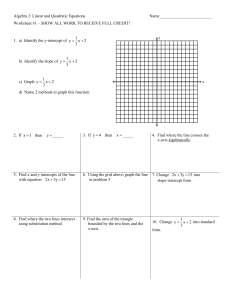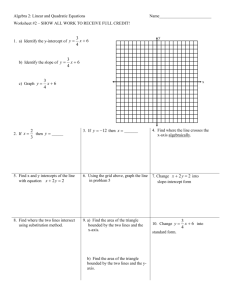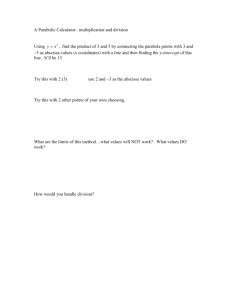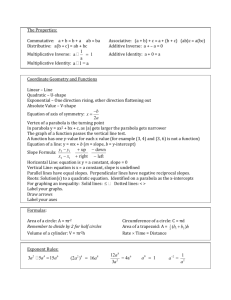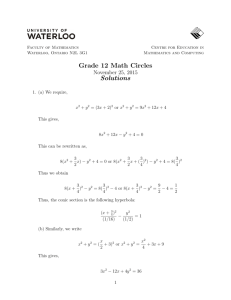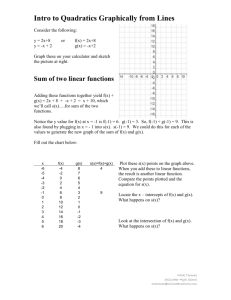Quadratics 6:
advertisement
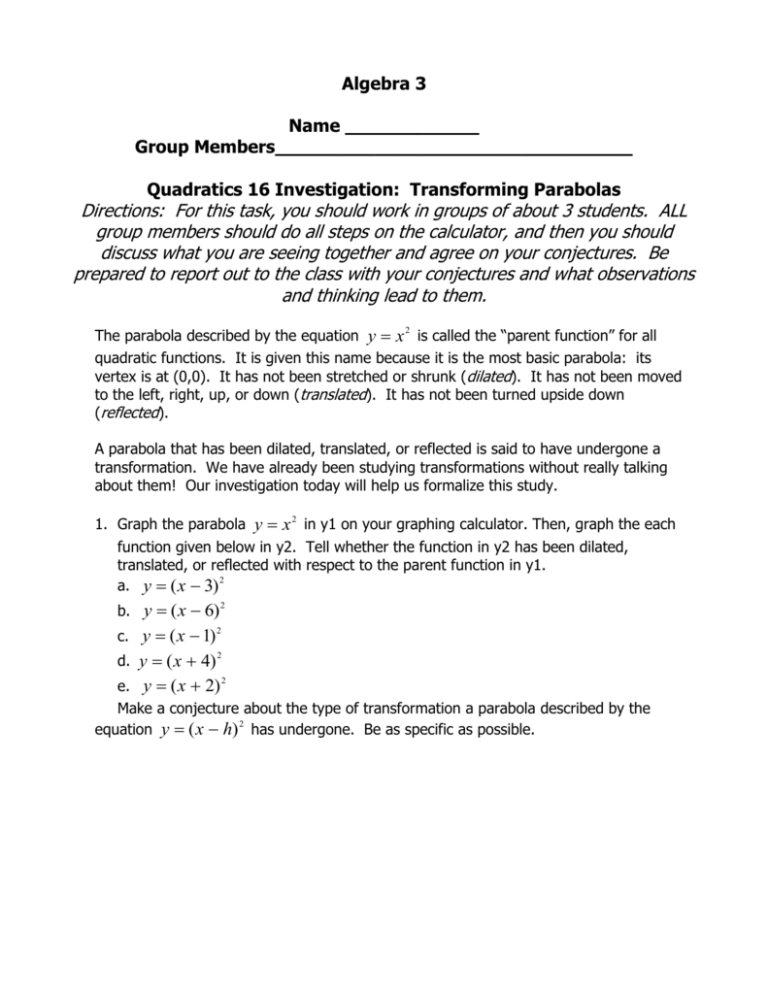
Algebra 3 Name ____________ Group Members________________________________ Quadratics 16 Investigation: Transforming Parabolas Directions: For this task, you should work in groups of about 3 students. ALL group members should do all steps on the calculator, and then you should discuss what you are seeing together and agree on your conjectures. Be prepared to report out to the class with your conjectures and what observations and thinking lead to them. The parabola described by the equation y x is called the “parent function” for all quadratic functions. It is given this name because it is the most basic parabola: its vertex is at (0,0). It has not been stretched or shrunk (dilated). It has not been moved to the left, right, up, or down (translated). It has not been turned upside down (reflected). 2 A parabola that has been dilated, translated, or reflected is said to have undergone a transformation. We have already been studying transformations without really talking about them! Our investigation today will help us formalize this study. 1. Graph the parabola y x in y1 on your graphing calculator. Then, graph the each function given below in y2. Tell whether the function in y2 has been dilated, translated, or reflected with respect to the parent function in y1. 2 a. y ( x 3) 2 b. y ( x 6) 2 c. y ( x 1) 2 d. y ( x 4) 2 e. y ( x 2) Make a conjecture about the type of transformation a parabola described by the 2 equation y ( x h) has undergone. Be as specific as possible. 2 2. Again, graph the parabola y x under y1 on your graphing calculator. Then, graph the function given in y2. Tell whether the function in y2 has been dilated, translated, or reflected with respect to the parent function in y1. 2 a. y x 2 2 b. y x 7 2 c. y x 5 2 d. y x 1 2 e. y x 3 Make a conjecture about the type of transformation a parabola described by the 2 equation y x k has undergone. Be as specific as possible. 2 3. Once more, graph the parabola y x under y1 on your graphing calculator. Then, graph the function given in y2. Tell whether the function in y2 has been dilated, translated, or reflected with respect to the parent function in y1. 2 a. y 2x 2 b. y 3x 2 2 2 x 5 2 d. y .7 x 2 e. y 2x 2 f. y .2 x c. y Make a conjecture about the type of transformation a parabola described by the 2 equation y ax has undergone. Be as specific as possible. 4. Let’s combine the transformations. Try to list all the transformations that the graph of each quadratic function below has undergone with respect to the parent function, y x 2 . Check your lists using the graphing calculator. a. y ( x 3) 4 2 b. y 2 x 3 2 c. y 1 ( x 2) 2 1 4 5. Last step: try to write the vertex form equation for a parabola that has undergone 2 each of the following transformations with respect to the parent function, y x : a. reflected over the x-axis, translated 2 units left and 1 unit up. b. shrunk by a factor of .62, translated 4 units up. c. stretched by a factor of 4, reflected over the x-axis, translated 3 units down and 4 units right.
